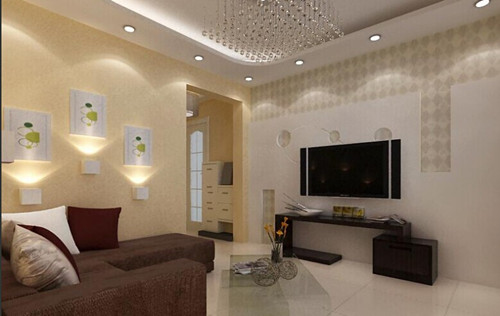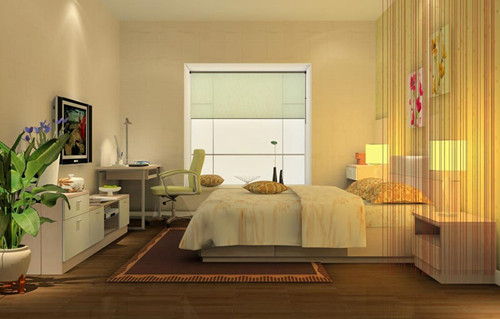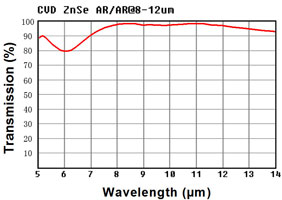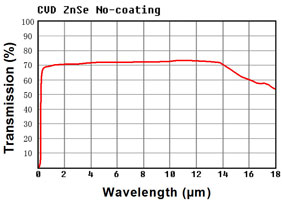What are the specific calculation methods for the decoration materials needed for the decoration?
I believe that many friends who bought rough rooms have experienced the pain of their own decoration. Whether you are clean, half-packed, or all-inclusive, you must understand the list of materials needed for decoration . Facing the bald four walls, he wants to integrate him into the independent space he wants. He does not know how to start. Before the renovation, we must first get a clear understanding of the list of home decoration materials in order to budget out the entire renovation costs in advance to prevent the advent of the entire renovation process and other conditions, today Xiaobian to lead everyone to see before the renovation, we must What are the bills of materials that are needed for decoration ?

List of materials needed for decoration
The decoration materials are specifically divided into the following:
First, from the living room to the bedroom, from the bathroom, the bathroom to the kitchen.
Second, the calculation of the decoration materials, in addition to the list of decoration materials.
First, the living room and bedroom decoration materials list
1. Building materials
Tile, paint, baseboard, floor, paint, plaster line, laminate flooring, blockboard, gypsum board, fir bar, multi-layer board, single press board, fire board, nail, wood line, door, foot line, aluminum plastic Buckle (focus)
2. Lamps
Main light, spot light, floor lamp
3. Cloth type
4. Hardware
Curtain rails, door locks, door stoppers, hinges, switch panels, power sockets, TV sockets, air conditioning sockets
Second, the kitchen decoration materials list
1. Building materials
Floor tiles, wall tiles, ceilings, cabinets
2. Lamps
Main lights, spotlights, cabinet lights
3. Electrical appliances
Cooker and hood
4. Hardware
Sink, sink faucet, floor drain, door lock, door stopper, hinge, switch panel, power socket, angle valve
Third, bathroom, bathroom decoration materials list
1. Building materials
Floor tiles, wall tiles, ceiling tiles
2. Lamps
Main lights, spotlights
3. Electrical appliances
Ventilation fan, Yuba
4. Sanitary ware
Wash basin, tabletop, MT, mirror
5. Hardware
Rack, bath faucet, switch panel, power socket, angle valve, shower, basin faucet, drain pipe, sheath line

The decoration materials are calculated as follows:
First, the amount of ceiling
Roof plate usage=(length-shield length)×(width-shield width)
Second, the floor dosage
Solid wood floor usage:
Vertical usage=room length/tile length
Lateral usage = room width / floor tile width
If they are not exhausted, they must use the carry-in method, but they must not be rounded, but in the longitudinal direction, they are not half a block, and half of them are counted.
Total floor price = total usage × unit price
Floor loss = floor area - housing area
Floor loss rate = floor loss / housing area ps: General floor loss rate is not more than 5%
Third, the amount of floor tiles
100 square meters amount = 100/[(block length + gray seam width) × (block width + gray seam width)] × (1 + loss rate)
Ps: Generally different room type loss rate is different about 1-5% of the total price of floor tiles = number of floor tiles × floor tiles unit price
Fourth, the amount of wall material
The amount of wall materials used can be reasonably calculated based on the size of the living room, taking into account the possible loss of construction, can buy more than 5% of the actual amount.

There are two ways to calculate wall materials:
Formula calculation
Multiply the area of ​​the room by 2.5, and the product is the number of materials used for the wall. S = (L/M + 1)(H + h) + C/M ps:
[S--the length of the required wall material (m) L--the total length of the wall after the deduction of the window, door, etc. (m) M--the width of the wall material (m), plus 1 as the splicing pattern The amount; H--the height of the required wall material (m) h--the distance between two identical patterns on the wall material (m) C--the area of ​​the wall required for the upper and lower windows, doors, etc. (m2) 】
2. Field measurement
The field survey must first understand the width of the wall material to be selected, and measure the perimeter of the room wall (excluding doors, windows, etc.) according to the width. There are several widths of the wall material in the perimeter, that is, a few sheets are required. Then measure the height of the wall that should be affixed. Multiply this by the number of walls, which is the length (in meters) of wall material required for the wall outside the door and window. Finally, the length of material required for the wall under the window, irregular corners, etc. is measured by this method, and it is added to the calculated length, which is the total length. This method is more suitable for fine-grained patterns, without special alignment of the wall material when splicing.
Fifth, wallpaper usage
Wallpaper Usage = (High - Shielded Length) × (Width - Shielded Width) × Walls - Door Area - Window Area
Sixth, coating amount estimation method
The room area (square meters) divided by four, the height of the wall to be painted (in decimeters) divided by four, the sum of the two is the number of kilograms of paint required. Calculated kilograms of paint can be painted on the wall twice.
Seven, package door dosage
Package door material usage = door outer frame length * door frame width
The above calculation method is the calculation method for the amount of materials used for some decoration materials. After multiplying the amount of materials used for decoration of each part by the respective unit price, the total material cost of the decoration project is obtained.
Editor's summary: The above is a list of the materials needed for decoration, which are related to the specific calculation method of the decoration materials, and hope to help friends who have this requirement! For more information, please continue to pay attention to our website, follow-up will show more exciting content.
Precautions for the establishment of a list of decoration materials Renovation materials list Renovation materials Brand decoration materials Knowledge Renovation materials Requisite materials list
The transmission range of Zinc Selenide ZnSe-CVD is 0.5 - 20 µm.
ZnSe CVD used for high power CO2 laser optics at 10.6µm, for protective optics windows or optical elements in FLIR (forward looking infrared) thermal imaging equipment, optics for medical and industrial applications (optical plane parallel windows (plates, disks, blanks), wedged windows, optical meniscus, spherical and cylindrical lenses, prisms, resonator mirrors of CO2 laser).
The refractive index is near 2.4. Zinc Selenide has a very low absorbtion coefficient and is used extensively for high power infrared laser optic. It is non-hygroscopic.
Zinc Selenide (ZnSe) - transparent in wide spectral range from yellow (visible) to far IR. ZnSe material is a chemically inert, non-hygroscopic and highly pure product that is very effective in many optical applications due to its extremely low bulk losses, high resistance to thermal shock and stability in virtually all environments, easily machined.
Special care should be taken when handling Zinc Selenide as it is a toxic material. Always wear rubber or plastic gloves to avoid risk of contamination.



Zinc Selenide Co2 Laser Lens,Zinc Selenide Focusing Lens,25.4Mm Znse Lens,Zinc Selenide Lens
China Star Optics Technology Co.,Ltd. , https://www.realpoooptics.com